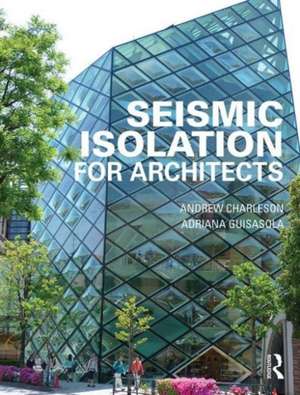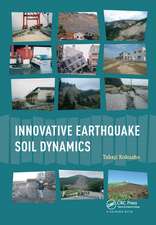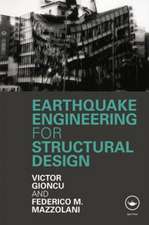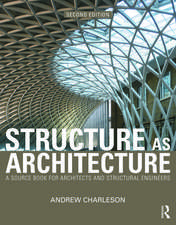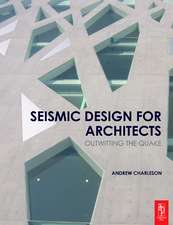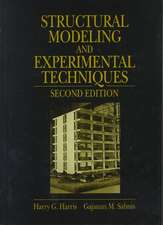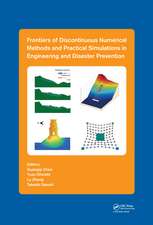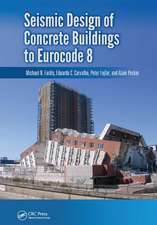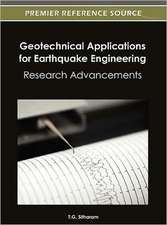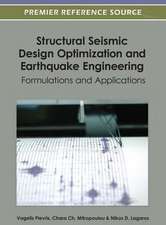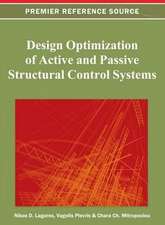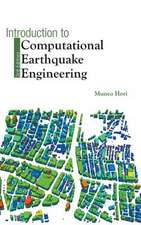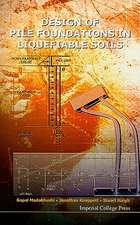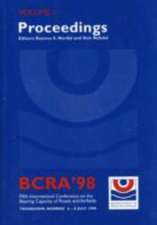Seismic Isolation for Architects
Autor Andrew Charleson, Adriana Guisasolaen Limba Engleză Paperback – 14 iul 2016
Seismic Isolation for Architects is a comprehensive introduction to the theory and practice in this field. Based on the latest research findings and the authors’ extensive experience, coverage includes the application, effectiveness, benefits, and limitations of seismic isolation, as well as the architectural form, design aspects, retrofitting, economics, construction, and maintenance related to this method.
The book is written for an international audience: the authors review codes and practices from a number of countries and draw on examples from eleven territories including the US, Chile, Argentina, Italy, Japan, and New Zealand. Aimed at readers without prior knowledge of structural engineering, the book provides an accessible, non-technical approach without using equations or calculations, instead using over 200 drawings, diagrams and images to support the text. This book is key reading for students on architecture and civil engineering courses looking for a clear introduction to seismic-resistant design, as well as architects and engineers working in seismically active regions.
| Toate formatele și edițiile | Preț | Express |
|---|---|---|
| Paperback (1) | 355.36 lei 6-8 săpt. | |
| Taylor & Francis – 14 iul 2016 | 355.36 lei 6-8 săpt. | |
| Hardback (1) | 991.80 lei 6-8 săpt. | |
| Taylor & Francis – 18 iul 2016 | 991.80 lei 6-8 săpt. |
Preț: 355.36 lei
Preț vechi: 455.97 lei
-22% Nou
Puncte Express: 533
Preț estimativ în valută:
68.01€ • 73.84$ • 57.13£
68.01€ • 73.84$ • 57.13£
Carte tipărită la comandă
Livrare economică 22 aprilie-06 mai
Preluare comenzi: 021 569.72.76
Specificații
ISBN-13: 9781138813212
ISBN-10: 1138813214
Pagini: 204
Ilustrații: 348
Dimensiuni: 189 x 246 x 15 mm
Greutate: 0.58 kg
Ediția:1
Editura: Taylor & Francis
Colecția Routledge
Locul publicării:Oxford, United Kingdom
ISBN-10: 1138813214
Pagini: 204
Ilustrații: 348
Dimensiuni: 189 x 246 x 15 mm
Greutate: 0.58 kg
Ediția:1
Editura: Taylor & Francis
Colecția Routledge
Locul publicării:Oxford, United Kingdom
Public țintă
Postgraduate, Professional, Professional Practice & Development, and UndergraduateCuprins
Acknowledgements. 1. Introduction 2. History, Requirements and Principles of Seismic Isolation 3. Seismic Isolation Systems and Hardware 4. Effectiveness of Seismic Isolation 5. Benefits and Limitations of Seismic Isolation 6. Seismic Isolation and Architectural Form 7. Retrofitting 8. Design Aspects 9. Economics of Seismic Isolation 10. Construction and Maintenance 11. Conclusions Index
Notă biografică
Andrew Charleson is an Associate Professor at the School of Architecture, Victoria University of Wellington, New Zealand. A structural engineer with many years' earthquake engineering experience, he now teaches Structures. He has previously authored two books, Seismic Design for Architects and Structure as Architecture.
Adriana Guisasola is an architect and Associate Professor in Structures at the Faculty of Architecture, Urban Planning and Design, Mendoza University, Argentina. She is in the process of completing her doctoral thesis on "Architecture and Base Isolation". She has authored many papers for world conferences on earthquake engineering and seismic isolation, energy dissipation, and active vibration control of structures.
Between them, the authors have been actively involved in the design and construction of three seismically isolated buildings and have visited and studied over 60 more in 11 different countries.
Adriana Guisasola is an architect and Associate Professor in Structures at the Faculty of Architecture, Urban Planning and Design, Mendoza University, Argentina. She is in the process of completing her doctoral thesis on "Architecture and Base Isolation". She has authored many papers for world conferences on earthquake engineering and seismic isolation, energy dissipation, and active vibration control of structures.
Between them, the authors have been actively involved in the design and construction of three seismically isolated buildings and have visited and studied over 60 more in 11 different countries.
Recenzii
"I believe that this very well written and documented book will be very useful to architects worldwide. In fact, it explains the features and advantages of seismic isolation in a very useful way to architects, by stressing the fact that, thanks to this technique, it is possible not only to make buildings much safer at limited additional construction costs (if any), but also to allow for adopting architectural solutions that could never be applicable to conventionally founded buildings." - Alessandro Martelli, President of the Italian Association GLIS, Founding President and present Vice-President of the Anti-Seismic Systems International Society (ASSISi), and former Professor of "Constructions in Seismic Areas" at the Faculty of Architecture of the University of Ferrara, Italy
Descriere
Seismic isolation offers the highest degree of earthquake protection to buildings and their inhabitants. Modern applications of the technology are less than 50 years old and uptake in seismically active regions continues to soar. Seismic Isolation of Buildings is a comprehensive introduction to the theory and practice in this field.
